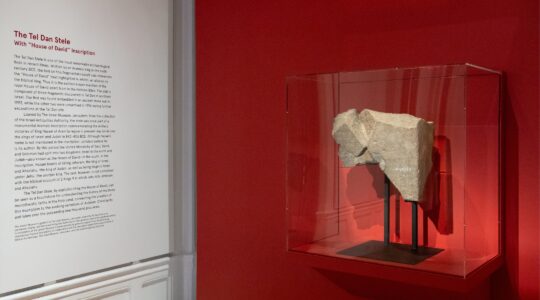ISRAEL VOTES 2009: NEWS ANALYSIS
(JTA) — In the chaos of the day after Israel’s election, the possibilities for who will lead Israel’s next government, and with what sort of coalition, seem endless.
However, if the parties are categorized by ideology, the noteworthy consequences of this election immediately become clear:
1. Victory for the right wing
First and foremost, this election was a triumph for the right wing. Right-wing parties (not including the religious parties), picked up 18 seats in the 120-member Knesset. Left-wing parties lost eight seats. This analysis considers Labor, Kadima and Meretz left-wing parties, and Yisrael Beiteinu, Likud, Jewish Home and National Union right-wing parties.
Things look even worse for the left if the religious parties are counted as right wing — they are, though their major concerns are religious in nature — and if Kadima is counted as a centrist rather than a leftist party. Kadima is placed in the left-wing category because Tzipi Livni’s approach to Arab-Israeli affairs is indistinguishable from that of Labor’s. In a party without any clear ideology, the Kadima primary race last September essentially was a contest between a Kadima Laborite, Livni, and a Kadima Likudnik, Shaul Mofaz. The Laborite won.
Of course, the old distinctions between right and left no longer apply in Israel. All major parties, including Avigdor Lieberman’s Yisrael Beiteinu, favor a two-state solution with the Palestinians. Where they differ is how to achieve that solution, how fast to accomplish it and in slight variations over the contours of the Palestinian state.
The primary difference between left and right in this election was that the left believes a two-state solution can be achieved now, whereas the right believes it’s not possible now, given the radicalism and divisions among the Palestinians.
2. Netanyahu’s comeback
While Benjamin Netanyahu did not do as well as some polls two months ago projected, his party still registered the biggest gains overall, and by a lot. Likud picked up 15 seats, rising to 27 from the 12 it won in a lackluster showing in 2006.
3. Kadima did not gain
Kadima actually lost ground Tuesday. In the last election, in 2006, incumbent Prime Minister Ehud Olmert won 29 seats for his party. He had been prime minister for just under three months, having taken over when Ariel Sharon suffered a massive stroke.
With Livni at the helm Kadima captured 28 seats, one less than Olmert. To be fair, even this amount is remarkable given that her party’s prime minister launched a failed war in Lebanon and, after two years of dilly-dallying, a war of indeterminate success in Gaza — to say nothing of the political corruption scandal that resulted in his resignation.
It appears that voters associated those failures with Olmert rather than Kadima or Livni herself, who served as Olmert’s foreign minister throughout. It’s also likely that traditional left-wing supporters of Labor, knowing that Labor had no chance of winning the election, threw their support behind Livni as the left-wing candidate of choice for prime minister.
4. Arab parties grew
Israel’s Arab parties picked up two seats, increasing their Knesset representation by 20 percent. Balad, whose erstwhile leader, Azmi Bishara, fled Israel while under investigation for treason for passing on information about Israeli army positions to Hezbollah during the 2006 war, picked up one seat. Hadash, a mixed Jewish-Arab party, picked up another. The Knesset’s third Arab party, Ra’am, held its own.
The gains, which came despite calls by some Arab Israeli community leaders to boycott Israel’s elections, can be explained by the strong Arab opposition to Lieberman, whose positions threaten Israel’s Arab citizens. Also, a simple demographic fact: The Arab population of Israel is growing at a much faster rate than Israel’s Jewish population.
JTA has documented Jewish history in real-time for over a century. Keep our journalism strong by joining us in supporting independent, award-winning reporting.





